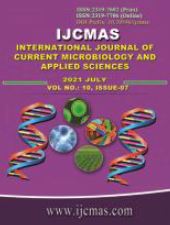


 National Academy of Agricultural Sciences (NAAS)
National Academy of Agricultural Sciences (NAAS)

|
PRINT ISSN : 2319-7692
Online ISSN : 2319-7706 Issues : 12 per year Publisher : Excellent Publishers Email : editorijcmas@gmail.com / submit@ijcmas.com Editor-in-chief: Dr.M.Prakash Index Copernicus ICV 2018: 95.39 NAAS RATING 2020: 5.38 |
Mushrooms have been consumed since earliest history; ancient Greeks believed that mushrooms provided strength for warriors in battle and the Romans perceived them as the “Food of the Gods.” For centuries, the Chinese culture has treasured mushrooms as a health food an “elixir of life.” They have been part of the human culture for thousands of years and have considerable interest in the most important civilizations in history because of their sensory characteristics; they have been recognized for their attractive culinary attributes. Currently, mushrooms are popular valuable foods because they are low in calories, carbohydrates, fat and sodium, they are cholesterol free also. Moreover, mushrooms provide important nutrients, including selenium, potassium, riboflavin, niacin, vitamin D, proteins and fiber. All together with a long history as food source, mushrooms are important for their healing capacities and properties in traditional medicine. It has reported beneficial effects for health and treatment of some diseases. Many nutraceutical properties are described in mushrooms, such as prevention or treatment of Alzheimer, high risk of stroke, hypertension and Parkinson. They are also utilized to condense the possibility of cancer attack and metastasis due to antitumoral attributes. Mushrooms act as antibacterial, immune system enhancer and cholesterol lowering agents; In addition, they are important sources of bioactive compounds. As a result of these properties, some mushroom extracts are used to promote human health and are found as nutritional supplements.
 |
 |
 |
 |
 |